Golden Demon UK saw the return of an old time Slayer sword winner. After 20 years since his first Slayersword win, he returned to the contest, older and wiser, and despite the time of inactivity, improved painting skills. He managed to win not only 3 Golden Demons, but also take home the precious Slayer sword UK 2013. Let’s see what David Soper wants to tell us about his glorious comeback!
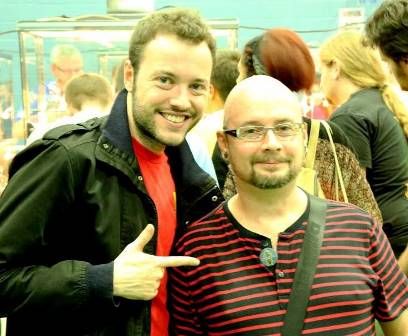
Volomir: Being as you are, a miniature painting old glory, tell us about your very unusual painting story. When did you start painting miniatures? What happened that led you to come back to painting after so many years?
David:
Some time around 1980 there was a big craze for role-playing games like Dungeons and Dragons and it was through this that I first became aware of miniature painting. My interest shifted very quickly away from gaming to painting. The moment I saw those tiny figures I absolutely knew that miniature painting was the hobby for me!
By the age of 14 I had developed a strong aptitude for art but my work had a tendency to get bogged down in lots of tiny tight detail. With miniature painting I had a hobby where I could direct all my obsessiveness to good effect. It would also help to free up my painting and drawing style as I studied towards getting a place at art college.
Over the following years, as I left school and went to art college, I spent my spare time painting minis and began to develop and refine my technique. At first there was no info out there at all and I learnt by trial and error. It was through the pages of White Dwarf magazine that I gained exposure to a wider world of miniature painting and a growing awareness of just how much more there was to learn.
Then we come to 1987 and the first Golden Demon Competition. I thought I was quite good but had no objective way of gauging the standard of my minis. That year I didn’t get past the regional heats. It gave me a kick in the pants and fired me up to prove that I too could make it to the finals.
Up until this point I had been painting in splendid isolation, in 1988 Southampton had it’s own Games Workshop store and I was getting to connect with other hobbyists. I made it through to the finals, and I really could not have been happier. I didn’t expect anything more, so when I won gold in two categories I was genuinely shocked; and it forced me to reappraise myself as a figure painter. This marked the start of a period of intense effort to raise my game.
In 1989 I managed to repeat my success and it was during the award ceremony that I decided to try to win the slayer sword! From then on all my painting and sculpting efforts were focused on that goal. I started the biggest and most ambitious project I had attempted to date, my Nurgle Predator.
At the 1990 finals I was a mess of nerves, I’d put everything I had into this one model. I’ve little clear memory of the awards ceremony itself. I just found myself standing on the stage with the sword held up over my head and no memory of how I got up there!
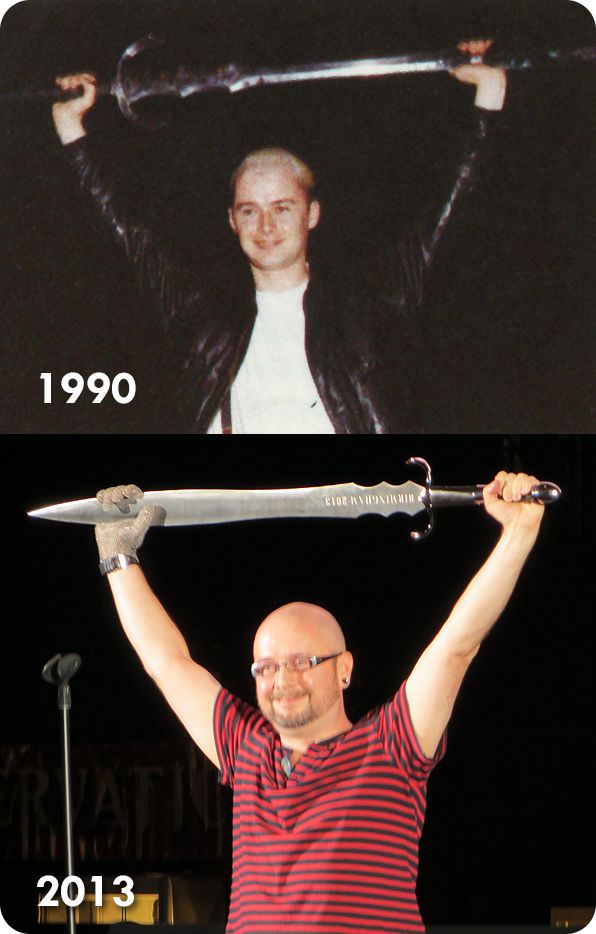
The period where I dropped right out of the hobby is probably no longer than three or four years. I remember quite clearly that by 2002 I no longer considered myself a mini painter. I tried to paint some of the new Fellowship of the Rings minis and failed abysmally. Through lack of practice I had lost my technique and confidence. I was surprised by how much of a sense of loss that gave me.
Although I was no longer painting I kept an eye on the hobby through the occasional copy of White Dwarf and increasingly through the internet. It was around this time I discovered Cool Mini or Not. The hobby had evolved and I was blown away by the degree of realism and the sophistication of technique now being employed by many painters. It was inspiring but daunting.
What followed was a process of being drawn gently back into the hobby through some of my other interests. Around 2006 I started painting minis with an ancient Egyptian theme and then, in 2011, I painted some Dr Who minis that I made into a diorama. I found that I was hooked all over again.
The big thing that enabled me to develop my ‘modern’ style as a painter was acknowledging and embracing my old school roots. This came together for me when I painted the Hellion that won the 40k single mini gold. To me that mini feels like a fusion of old and new and it sparked off a period of experimentation that resulted in the Dark Eldar diorama.
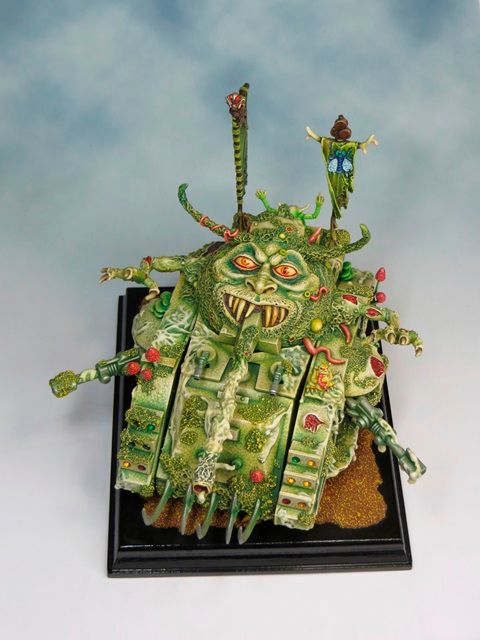
Volomir: How do you see the miniature world and miniature painting scene now compared to how it was back then?
David: It’s very different now! For me it’s the online painting community that has really made the difference. The hobby has been opened right up and expanded by sharing of ideas and experience through blogs and forums. There is a far greater awareness of the many different possible ways of painting a mini now.
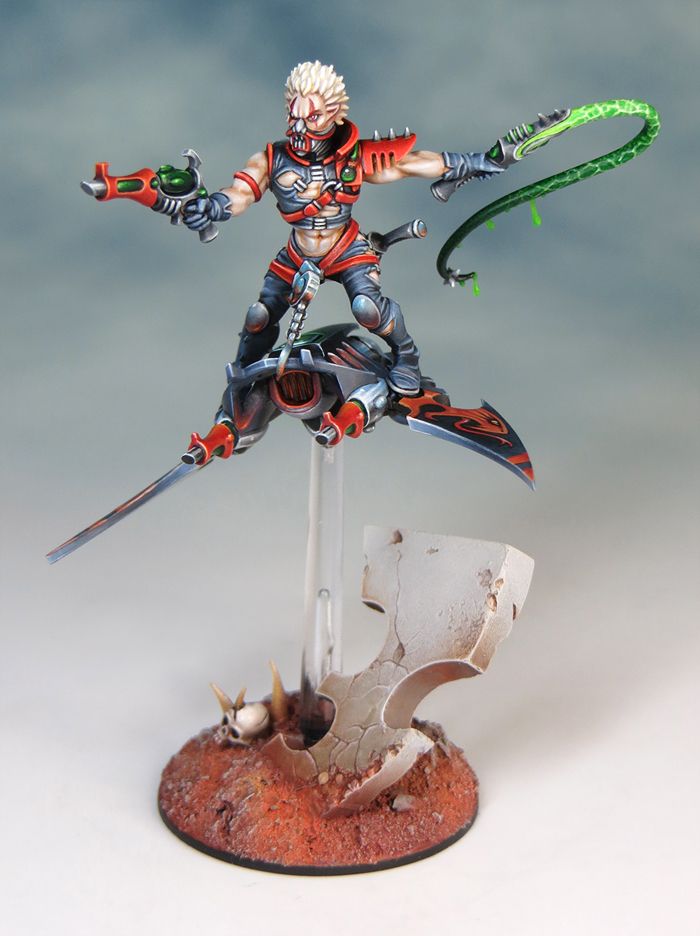
Volomir: Have you seen changes in regards to techniques, ways of working or painting tastes? Was it difficult to catch up with the painting world when you returned?
David:
For the most part I don’t think that the basic toolkit of painting techniques has changed that much. The biggest difference I’ve noticed is the use of airbrushing which you hardly ever saw used for mini painting back in the 80’s & early 90’s.
The thing that has really changed, beyond all recognition, is the way that painters now apply and combine techniques. I think that exposure to other painting traditions, like military and historical model painting and even fine art, has had a huge influence especially in the pursuit of greater realism. There is also a far greater range of materials and equipment being used. The combination of these factors with the online sharing of information means that there is now a huge diversity of painting styles/tastes out there.
Broadly speaking tastes have moved towards greater realism and subtlety in miniature painting. There is also an increased appreciation of the more ‘painterly’ and artistic approach to mini painting.
I think the ‘modern’ challenge is to use painting techniques with greater control, sophistication and subtlety to create a wide range of effects and greater realism.
When I started to paint regularly again the prospect of catching up was very daunting! I had a big struggle to get my technique back, and I really had to work very hard at. Knowing that I could once do this was a double-edged sword feeding both my frustration and my drive to be able to do it again!
I finally reached the point where I felt that I’d returned to the level I was at when I’d stopped painting. It was a great feeling but really only served as a jumping off point for a new era. I was back up to speed but I was not up to date! Since then I’ve focused my efforts on trying to develop my painting in a way that feels relevant to the modern hobby.
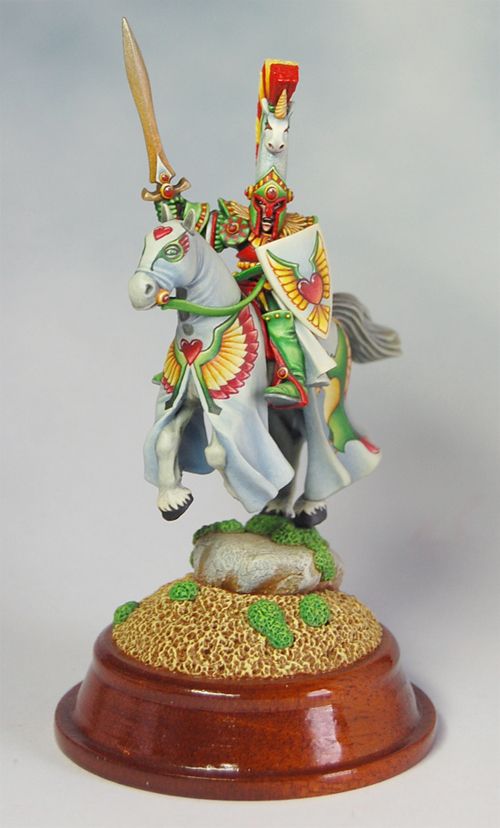
Volomir: Who are your favourite miniature painters and which would you consider the best or more inspiring miniatures of all time in your opinion?
David:
This is going to be a very selective and subjective list but among my favourite painters are John Blanche, Mike McVey, Darren Latham, Roman Lappat, and yourself (honest).
Picking the best miniatures of all time is a tall order! Among those that have inspired me the most are your own Tribute to the Fallen, Stephan Rath’s Eldar Warseer, Roman Lappat’s Rhino King, Enrique Valasco’s Ogrum Ironheart, Raffaele Picca’s Giu’s Robot Repairs and last but not least John Blanche’s Chaos Minotaur conversion from 1987.
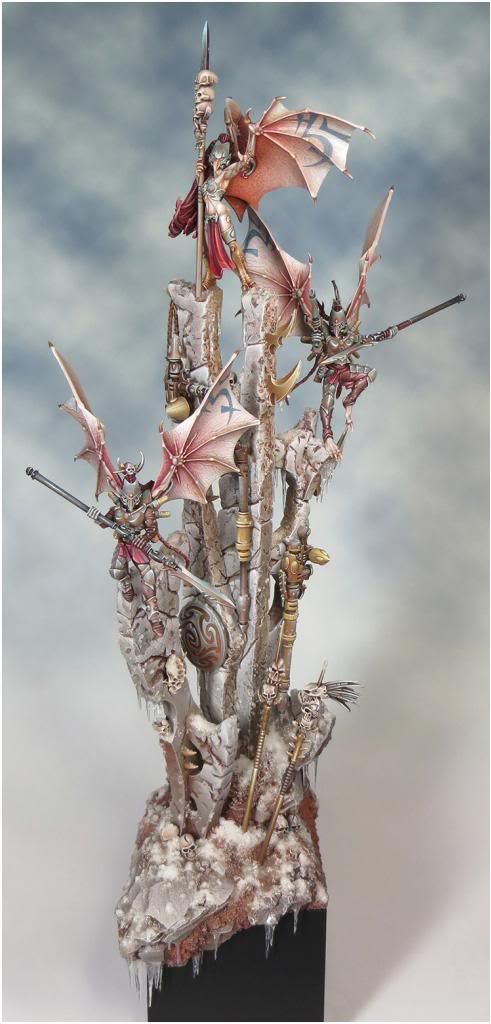
Volomir: How did you prepare for this Golden Demon? Did you aim specifically for winning something? How did you come with the ideas for your entries?
David:
When I started the diorama I had no intention of entering any painting competitions. I was just doing it for myself as the new (at the time) Dark Eldar minis had just come out and they really caught my imagination. About a year into the project a lot of people started to ask me if I was going to enter it in GD2012. There was no way I could finish the diorama in time but the seed of the idea was planted, so I decided to enter GD 2013. The prospect of having another try at the Demons had been hanging over me for 23 years and was quite daunting so I entered some of my non GW minis into Salute earlier this year as a sort of ice breaker. My success at Salute gave me the confidence to push on with my GD plans.
Once I’d made up my mind to enter GD the pressure was on. Having previously won a sword meant that there was an expectation that I might be able to do so again one day. I put every thing I had into the diorama and did the best job I possibly could on it. Which is not to say I think its perfect – far from it.
My main focus was on the Dark Eldar diorama and the other two entries were almost accidental! The Hellion was actually the first piece I painted for the diorama but it became redundant when the concept and style of the diorama moved away from my original idea. I thought the Hellion was probably good enough to justify entering in it’s own right, so a couple of days before GD UK I dug him out from the back of the figure cabinet and based him up for the competition.
I finished the diorama in July and I needed a project to keep me occupied and prevent me from going back and overworking the diorama in an effort to make it better. At that point the Skink priest came out and caught my attention as an appealing mini to paint. I decided to make a project of it and see if I could get it painted up in time for the competition. It’s the first time I’ve tried to paint a mini in such a short turn around time, and I had no idea if I could manage it. I decided to keep things pretty simple and just do the best paint job I could with no conversion or fancy base work
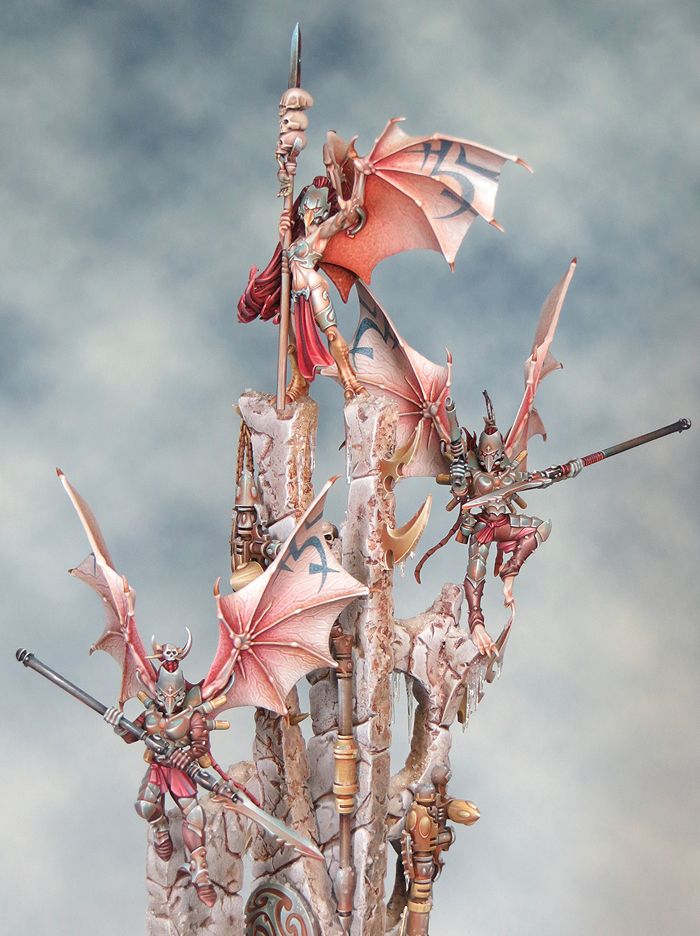
Volomir: How long did you work on your winner diorama? How did you come with the idea for it?
ç
David:
I was working on my diorama for over two years and I couldn’t even begin to guess how many hours went into it. The diorama was in a state of almost constant evolution as my ideas for it developed. I was using the project as a way of trying out new (for me) techniques and materials. As a result of this my approach to using colour underwent a massive change in the early stages of the project. This is the main reason I could no longer use the Hellion as it reflected my older style and didn’t match the Scourge minis. If I’d started the diorama with the intention of entering it into GD I would probably have gone about it in a very different way.
The initial idea for the diorama revolved around a scenario of conflict between rival gangs of Scourge and Hellions. I’d gone as far as making a completely different base for it but I put it to one side as it didn’t have the right tone. If you look back through the archives of my blog you will see the many changes the piece went through before it reached it’s final form. I’m very glad that I kept on changing and altering the base. I feel the final version is much better than the first. I learnt a valuable lesson about not being afraid to go in and change something, if I think it could be better.
The biggest casualty, and personal disappointment, was the loss of the narrative element from the diorama. I realised that there was no way I would get it finished for GD 2013 if I stuck with the gang warfare theme. I decided to bring the project to a conclusion (two years was more than long enough) with the elements that I had finished. The result is a far simpler piece than my initial idea. That’s not a bad thing in itself but I knew I was taking a big risk by sacrificing the narrative of the piece in order to get the diorama finished.
I learnt that both practically and temperamentally I’m not very well suited to big multi mini projects. That’s not to say I don’t think I should be ambitious in the scope of my mini painting but I need to recognise my strengths and limitations and plan accordingly.
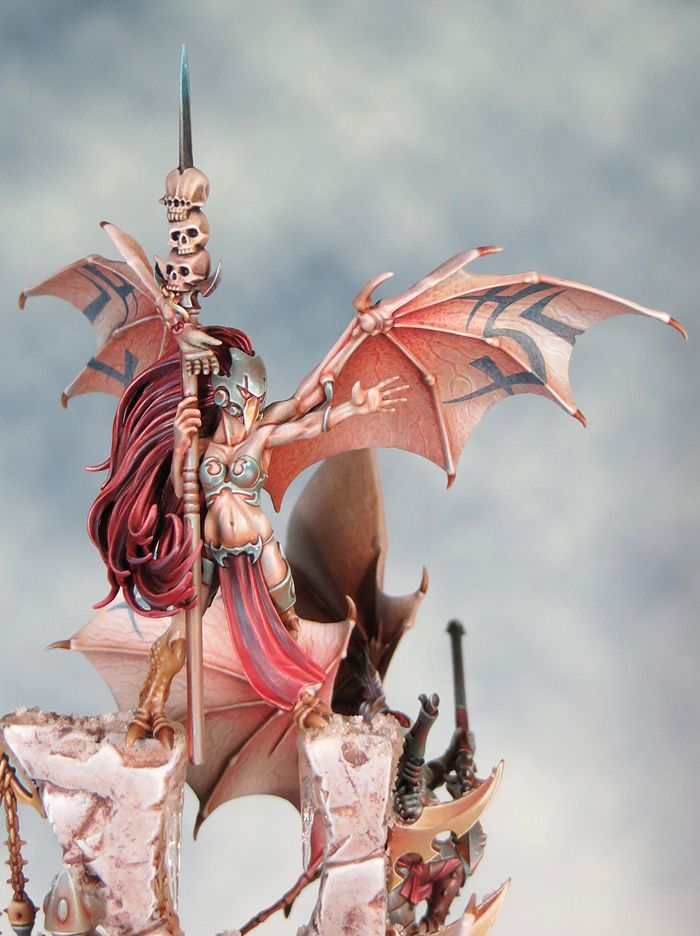
Volomir: How do you plan a new project? Can you tell us how do you go about when creating a new miniature and how much time do you dedicate to it?
David:
Once I’ve had the idea for a project I usually spend quite a lot of time just thinking about it before I get started. I will put together a folder of reference material using any sources that seems appropriate. This might include photographic references, textures, colours, book illustrations or pictures of painted minis that are relevant or inspirational. Some of the images in my folder may be used as direct reference but most will be there for inspiration. I also plan my colour palette early on as this will be a major element in creating the look and feel of the project.
I gather together all the elements I think I’ll need and start to experiment with the composition. It helps me to view these tests objectively if I photograph them. I think it’s really important to have a clear vision of the final composition before you start any proper work on the piece. Once I’m working on a project my ideas for it almost always change and evolve. The initial planning provides a strong foundation for that change.
Finding time to paint can be tricky and there are some weeks where I won’t get to pick up my brushes at all. Usually, however, I can steal a few hours during weekday evenings and I always try to build in some proper painting time into my weekends. I don’t tend to have fixed deadlines for painting a mini so I’m able to take as long on a project as I feel it needs. I like to break a project down into stages and plan out how I’m going to tackle them and it helps me to do this if I have an idea of when I’ll be finishing. I will try and set a rough timescale. For example I want to finish my current project over the Christmas break or thereabouts.
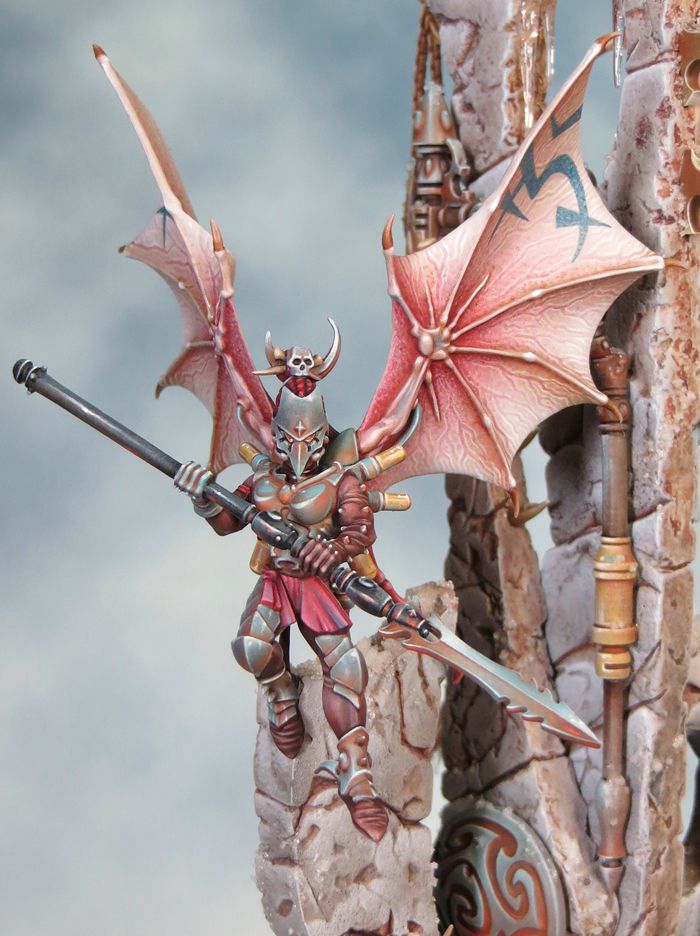
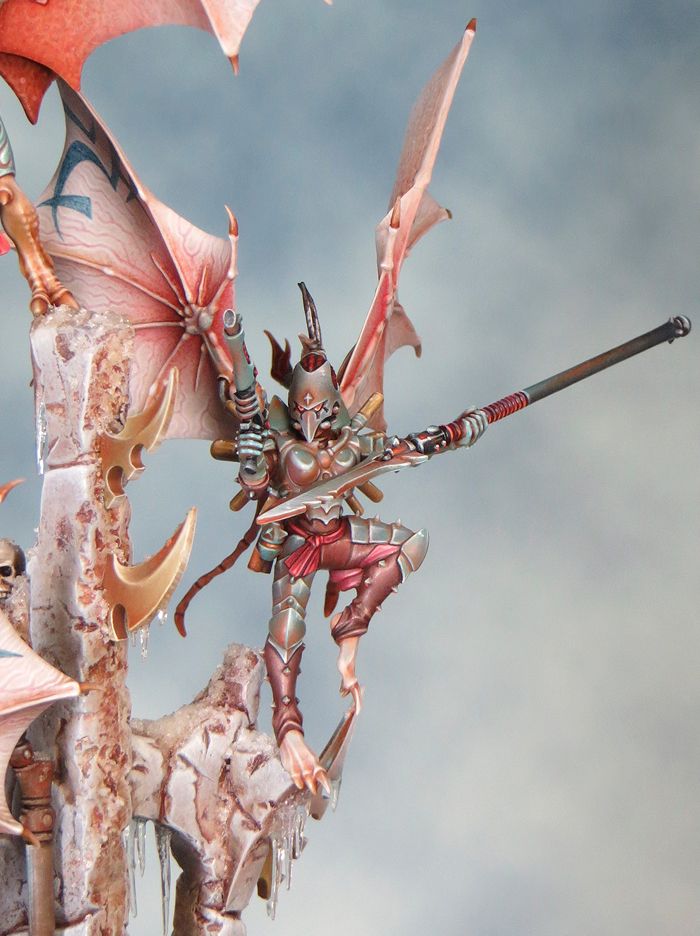
Volomir: What is your opinion on Games Day and Golden Demon UK 2013? Do you see big differences in how it was back then and now?
David:
My memories of Games Day 1990 are a bit hazy after 23 years but I was struck by how different 1990 & 2013 were in terms of atmosphere. Back in 1990 the (admittedly smaller) main hall seemed far busier and more crowded with many games and demonstrations taking place. My abiding memory is of all the noise and especially the deafening roar that went up when the Demons were awarded. Although that may say more about my state of mind at the time!
The 2013 Golden Demon competition itself was a very different experience for me from that of 1990. Overall I thought the organisation and structure of the day were a great improvement. Sorting the minis first into finalist and then winners gave the day a feeling of progression and helped to keep & build the excitement. In 1990 you dropped off your minis and then had to wait until the end of the day to find out if you’d won anything, it was a long day. The awards ceremony itself was far better organised than In 1990 when you had to struggle through the crowds out front to get up on stage and collect your prize. I thought that the organising of the winners back stage was a massive improvement.
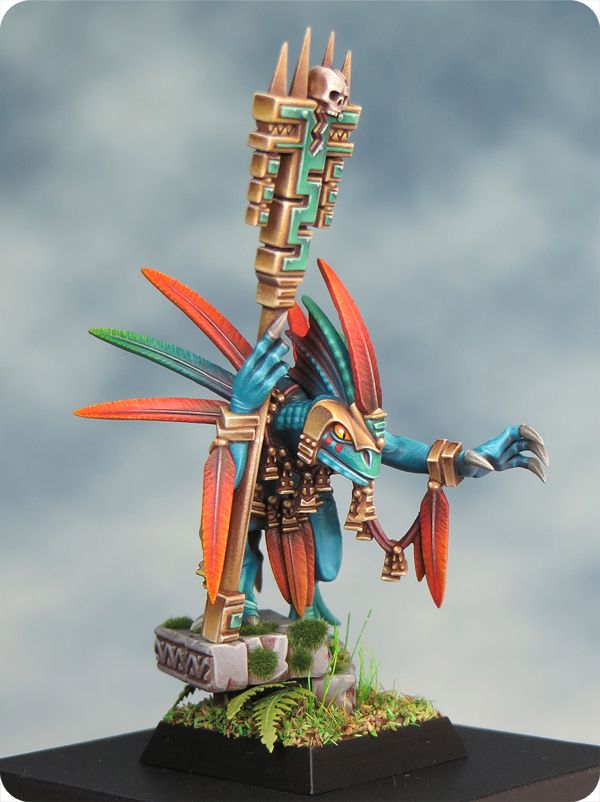
Volomir: What do you think about the controversy around how Games Workshop’s latest policies and how they are treating Games Days all around the world?
David: I try to be philosophical about it and take a ‘let’s wait and see’ approach. Over the years there have been a few times when Games Workshop’s policies have stirred up a storm among hobbyists and generally it worked out OK.
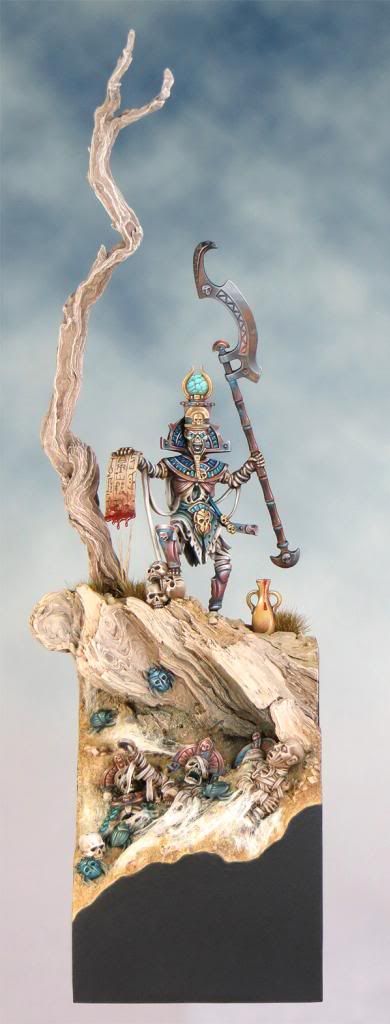
Volomir: And finally, a very important question! Are you going to retire again for another 20 years? Or do you plan to stay with us for a while?
David: It might be rather cool to disappear and then come back and win another Slayer Sword when I’m 70! But I’ve enjoyed returning to the hobby. I think I’ll stick around this time!
I think this has been the longest interview that this Blog has ever seen. How many interesting answers! A great pleasure to be able to read these lines filled with wisdom and experience from having seen Golden Demons since they were born. We hope to see you stay with us for a long time, David!

4 comments:
Awesome article as always! I am so happy that I know both of you :)
Weird to think David could be the last Slayer Sword winner ever... If he was, I don't think it could have been anyone more deserving :)
Nice interview, I really enjoyed it :)
Very cool interview ... thanks for the nice read to you both!!
Mr. Soper strikes me as a very humble man... not what one would expect from someone who has won the Slayer Sword twice, and has the massive fan following that he does. Kudos to him.
Post a Comment